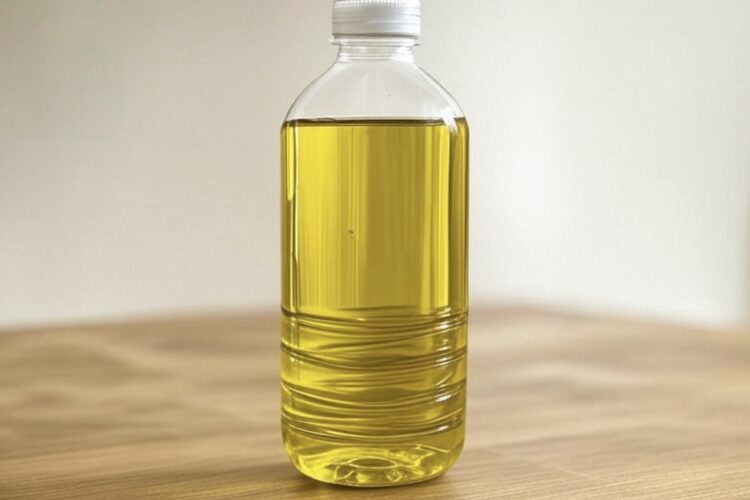Storing food oils and fats in plastic containers is common, but is it safe? Food-grade plastics like PET, HDPE, and PP are designed to minimize chemical leaching, meeting strict FDA and EU standards. However, concerns about BPA, phthalates, and other compounds migrating into oils persist, especially with heat or long storage. Oils can extract chemicals due to their fat content, but risks are low with proper use. Choose BPA-free, food-grade containers, store in cool, dark places, and avoid reusing single-use plastics. Glass or metal are safer alternatives but less practical. Innovations in bio-based plastics and tighter regulations are improving safety. Follow these tips to reduce health risks while keeping oils fresh.
Long Version
The storage of food oils and fats in plastic containers is a common practice in households and industries worldwide, valued for its convenience, affordability, and durability. However, concerns about chemical leaching, food safety, and potential health risks have sparked debates about whether plastic is truly safe for this purpose. While food-grade plastic is generally deemed safe under regulatory standards, questions persist about migration of chemicals like Bisphenol A (BPA), phthalates, and other leachable compounds into oils and fats. This article provides an in-depth exploration of the topic, addressing the science, regulations, risks, and best practices to offer a complete and authoritative resource.
Understanding Food Oils, Fats, and Plastic Packaging
Food oils (e.g., olive, canola, sunflower) and fats (e.g., butter, lard) are essential dietary components, rich in lipids that provide energy and support bodily functions. Their chemical composition, particularly their high lipid content, makes them prone to interactions with storage materials. Plastic containers, widely used for their lightweight nature and cost-effectiveness, are made from polymers like polyethylene terephthalate (PET), high-density polyethylene (HDPE), low-density polyethylene (LDPE), and polypropylene (PP). These materials are selected for their barrier properties, which help protect oils and fats from external factors like air, light, and moisture, thereby extending shelf life.
However, plastics are not inert. They contain additives such as plasticizers, stabilizers, and antioxidants to enhance flexibility, durability, and appearance. Over time, under certain conditions, these additives or the polymer itself can degrade, leading to polymer degradation and the release of non-intentionally added substances (NIAS) or volatile organic compounds (VOCs). The question is whether these substances migrate into food oils and fats at levels that pose a health risk.
The Science of Chemical Leaching
Chemical leaching refers to the process by which substances from plastic migrate into food. Oils and fats, being lipophilic (fat-loving), can act as solvents, potentially extracting chemicals from plastic containers more readily than water-based foods. Key chemicals of concern include:
- Bisphenol A (BPA): A compound used in some plastics (though less common in food-grade plastics today), linked to endocrine disruption.
- Phthalates: Plasticizers that enhance flexibility but may interfere with hormonal systems.
- Leachable compounds: Includes degradation products or NIAS not intentionally added during manufacturing.
- Heavy metals: Trace amounts from catalysts used in plastic production.
The extent of migration depends on several factors:
- Type of Plastic: PET, HDPE, LDPE, and PP have different permeability and chemical stability profiles. For instance, PET is widely used for oil bottles due to its excellent barrier properties, while LDPE is more permeable.
- Storage Conditions: Higher temperatures, prolonged storage, and exposure to light or air can accelerate polymer degradation and chemical leaching.
- Food Composition: Oils with high oxidative stability (e.g., olive oil) may interact differently compared to less stable oils (e.g., fish oil).
- Contact Time: Longer storage increases the likelihood of migration.
Studies suggest that lipid oxidation in oils can also interact with plastic, potentially altering organoleptic properties (taste, smell) or accelerating chemical release. However, the levels of migration are typically low, especially in food-grade plastics designed to minimize such risks.
Regulatory Framework for Food-Grade Plastics
To ensure consumer safety, food-grade plastics are subject to stringent regulations. In the United States, the Food and Drug Administration (FDA) oversees materials that come into contact with food, requiring compliance with standards for FDA compliance. Plastics must be tested to ensure that migration of substances remains below safe thresholds under intended use conditions.
In the European Union, Regulation (EC) No 1935/2004 governs food contact materials, setting specific migration limits (SMLs) for substances like BPA and phthalates. The EU also mandates testing for NIAS to account for unintended compounds. Both regions require manufacturers to assess the barrier properties and permeability of plastics to ensure they protect food without introducing toxicity.
These regulations have driven innovations, such as BPA-free plastics and alternatives with lower plasticizer content. However, global standards vary, and in some regions, less stringent oversight may allow lower-quality plastics to enter the market, raising concerns about contamination.
Health and Environmental Concerns
While food-grade plastics are designed to minimize risks, health concerns persist, particularly regarding endocrine disruptors like BPA and phthalates. These chemicals may mimic hormones, potentially affecting reproductive health, metabolism, or neurological development, though conclusive evidence at low exposure levels remains debated. For oils and fats, the risk is considered low due to the small quantities of chemicals that typically migrate, but long-term exposure or improper storage (e.g., reusing non-food-grade containers) could elevate risks.
Environmental impact is another critical issue. Plastic production and disposal contribute to pollution, and chemicals like VOCs released during manufacturing can harm ecosystems. Recycling food-grade plastics is challenging due to contamination risks, and improper disposal exacerbates the environmental impact. Consumers are increasingly seeking sustainable alternatives, such as glass or metal containers, which offer inert properties but may be less practical or affordable.
Best Practices for Safe Storage
To minimize risks when storing food oils and fats in plastic containers, consider the following:
- Choose Food-Grade Plastics: Look for containers labeled as PET, HDPE, LDPE, or PP, ideally marked as BPA-free.
- Check Regulatory Compliance: Ensure containers meet FDA or EU regulations for food contact.
- Store Properly: Keep oils in cool, dark places to reduce polymer degradation and lipid oxidation. Avoid reusing single-use plastics, as they may degrade over time.
- Monitor Shelf Life: Use oils within recommended periods to avoid changes in organoleptic properties or increased migration.
- Consider Alternatives: For long-term storage, glass or stainless steel containers eliminate chemical leaching risks, though they may not suit all budgets or needs.
Innovations and Future Directions
The food packaging industry is responding to consumer concerns with innovations like bio-based plastics, which reduce reliance on petrochemicals, and advanced coatings that enhance barrier properties. Research into oxidative stability and permeability is improving plastic formulations to further limit migration. Additionally, regulatory bodies are tightening standards for NIAS and plasticizers, ensuring safer materials.
Emerging technologies, such as nanotechnology, may create plastics with superior resistance to chemical leaching, while recycling advancements could address environmental impact. Meanwhile, consumer education about proper storage and material choices remains crucial for balancing safety and practicality.
Conclusion
Storing food oils and fats in plastic containers is generally safe when using food-grade plastics that comply with FDA or EU regulations. However, potential risks from chemical leaching, such as BPA, phthalates, and NIAS, warrant attention, particularly under improper storage conditions. By understanding the science of migration, adhering to best practices, and staying informed about regulatory standards, consumers can minimize health risks while benefiting from the convenience of plastic. As innovations continue to improve barrier properties and reduce environmental impact, the future of food storage looks promising, offering safer and more sustainable options for all.
This comprehensive guide underscores the importance of informed choices, balancing practicality with safety, and highlights the ongoing efforts to address concerns about food safety, toxicity, and consumer safety in the context of plastic packaging.






